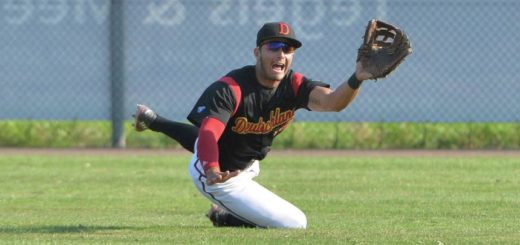Pitcher player in baseball
The pitcher initiates play by throwing the ball for the batter to hit. Good pitching is so important in defense that the role of the pitcher is qualitatively different from that of all other defensive players. Unlike every other position, where even sterling defenders are expected to pull their weight offensively, pitchers are selected without regard to their ability as batters.
The physical strain of pitching also makes it qualitatively different from all other positions. The pitching motion is unnatural and places extreme strain on the pitcher’s arm. Unlike other positions where a single regular player receives the lion’s share of a team’s playing time, it’s rare for a contemporary pitcher to throw more than about 1/6 of his team’s innings.
Because each pitcher throws such a small fraction of his team’s innings, it’s necessary for each team to have a pitching staff consisting of as many as 12 or 13 pitchers. Each pitcher is assigned a role, generally either as a starting pitcher or as a relief pitcher.
Starting pitchers
The starting pitcher is, as the name implies, the pitcher who starts the game for his team. The starter is expected to pitch deep into the game, and usually won’t be replaced until he tires or needs to be replaced with a pinch hitter. Starting pitchers commonly throw 100 or more pitches in a game and require several days to recover from the effort. Contemporary teams typically have 5 starting pitchers who take turns in a pitching rotation.
Relief pitchers
A relief pitcher takes over when the starter gets tired, pinch hit for, or pulled from the game for poor performance. Relievers don’t just pitch until they’re tired. Instead, relievers are given specialized roles that call for them to pitch a limited amount before being replaced by another reliever. That allows relievers to throw more often than starters, even in several games in a row, but their total number of innings is generally less than that of any starter. Additionally, while starting pitchers generally try to employ a wide bevvy of pitches to keep batters off-balance over multiple innings, relievers tend to use only their strongest pitches (usually between 2 and 4) to make the few outs they are responsible for.
Long reliever
A long reliever is the exception to the rule that relievers pitch only in limited doses. A long reliever is brought in when the manager needs to get several innings of relief, either because he was forced to pull the starter early in the game or because the game is in extra innings and he doesn’t know how long it will last. The requirements of a long reliever are more similar to those of a starting pitcher than to other relievers, and manager Earl Weaver said that long relief was an ideal role for a young pitcher trying to break into the starting rotation. A long reliever brought in when the game seems hopelessly out of reach is known as a mop up man.
Middle reliever
A middle reliever is brought into the game later than a long reliever would be, usually in the 6th or 7th inning. He is expected to protect a lead, or prevent the other team from extending its lead, for about one inning before giving way to a setup man. Middle relievers are often brought in when the starter has faltered and allowed batters to reach base, so they often must be good at stranding inherited runners.
Setup man
A setup man is usually brought into the game in the 7th or 8th inning when his team is tied or has the lead. He is expected to protect the lead or the tie before the manager brings in his closer. Setup men are often viewed as closers-in-waiting.
Closer
The closer is a reliever who specializes in finishing the game, and the position is normally held by the best reliever on the staff. Modern usage calls for the closer to be brought into the game to start the 9th inning when his team has a lead of 3 runs or less.
LOOGY
A LOOGY (short for “Lefty One Out GuY”, aka lefty specialist) is a reliever who is brought in to face one or two left-handed batters at a critical juncture of the game. Some teams have right-handed pitchers who are used in a similar role against right-handed hitters, but their use is much less stereotyped than the use of lefty specialists.
Swingman
A swingman (aka spot starter) is a pitcher who may be used either as a starter or as a reliever. The requirements of a swingman are similar to those of a long reliever, and the long relief role is where he would most commonly be used when relieving. The swingman will be given an occasional start, either to give the rest of the staff an extra day of rest, to spell a starter who must miss a start because of injury or suspension, or because the team has a doubleheader.
The early season schedule has more days off than the rest of the year, so it’s often possible to skip one spot in the rotation while still giving the rest of the starters their customary rest. Some teams will take advantage of this by moving their 5th starter into a swingman role for the first month of the season.





